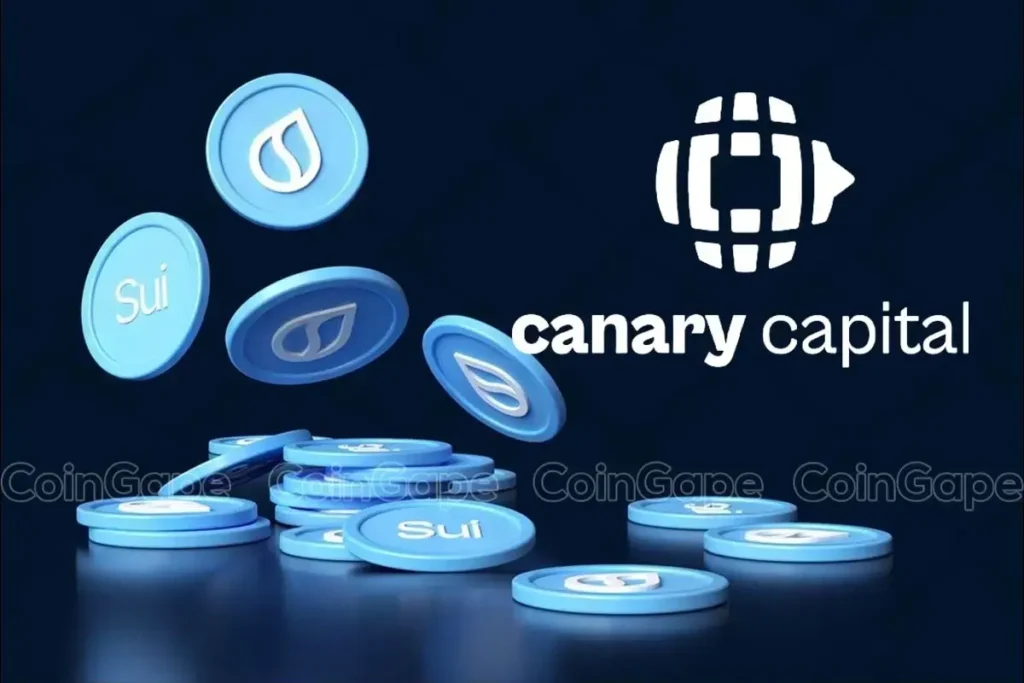The Recovery of SUI Price Amid ETF Innovations: An In-Depth Analysis
The SUI token has recently experienced a notable recovery following a significant announcement from the Cboe BZX Exchange, which filed to list the first-ever spot SUI Exchange-Traded Fund (ETF) in the United States. This strategic move represents a critical step toward integrating the SUI token into regulated financial products, enhancing its legitimacy and accessibility in the financial markets. Submitted under Form 19b-4 to the U.S. Securities and Exchange Commission (SEC), the filing has captured the attention of investors and cryptocurrency enthusiasts alike, reflecting a renewed interest in SUI amidst a challenging trading landscape.
Upon the announcement, the SUI price was trading at approximately $2.02, marking a 2% increase after a week characterized by downward pressure, resulting in a 20% loss over the previous seven days. This ETF filing has not only revitalized the token’s short-term trading activity but has also set the stage for future growth by aligning with investor interests. The SUI token’s ability to recover following such market fluctuations can be attributed to the strategic innovations being introduced, particularly through the proposed ETF.
Canary Capital’s Proposal: A New Frontier for SUI
The proposed Canary SUI ETF is designed to track the performance of the SUI token and will be offered on the Cboe BZX Exchange, contingent upon regulatory approval. Canary Capital, the firm behind the application, has outlined in the filing that the ETF will have the capability to stake a portion of its SUI holdings through trusted staking providers. This aspect of the proposal is particularly interesting as it allows the ETF to generate staking rewards, which will serve as income for the trust. However, it is crucial to note that the fund will not participate in any potential future forks or airdrops associated with the SUI token, which could influence its overall asset value.
This ETF proposal aligns with a broader trend where crypto-related investment products gain regulatory acceptance in traditional finance. Following the approval of spot Bitcoin and Ethereum ETFs, Canary Capital’s approach mirrors those earlier submissions by employing robust measures to mitigate market manipulation and ensure investor protection. The SEC has established rigorous standards for ETF approvals, and the Cboe BZX claims its filing meets these stringent guidelines, enhancing the likelihood of a successful review.
A Strategic Move in a Competitive Market
Canary Capital’s efforts to launch the SUI ETF come at a pivotal time in the cryptocurrency landscape. It signals a growing trend where institutional investors seek regulated ways to enter the crypto space. Canary Capital is not just focused on the SUI token; the firm is also working on additional cryptocurrency-related ETFs, including those related to Litecoin, XRP, Solana, and Hedera. Notably, its Litecoin ETF has already made strides by being listed on the Depository Trust and Clearing Corporation (DTCC) database. This preparation showcases Canary Capital’s intent to build a comprehensive suite of crypto investment products that cater to various investor preferences.
The introduction of the SUI ETF is expected to elevate the visibility and credibility of the SUI token, potentially encouraging institutional and retail investors to buy in. The ETF’s structure aims to appeal to a broad audience, driving demand and liquidity for the SUI token, thus fostering a healthier market environment.
Price Movements and Market Sentiment
As of April 8, the SUI price is testing the crucial $2.00 level, which serves as a psychological and technical marker for traders. Following a pattern of lower highs and lower lows, the token has faced a downward trajectory since hitting its peak of approximately $2.84 earlier this year. Current analysis indicates that if SUI can maintain its position above the $2.00 mark, it may pave the way for a potential breakout above its descending trendline situated around $2.20 to $2.30, leading to price targets of $2.50 and $2.80.
Conversely, if the SUI price fails to sustain its momentum and dips below the $2.00 threshold, it could revisit previous support levels at $1.80 and $1.60. These levels have previously attracted buying interest, suggesting that traders will closely monitor them for signs of potential reversals.
Investor Outlook: A Cautious Approach
While the recent uptick in price and the ETF proposal provide a glimmer of hope for SUI token proponents, market analysts remain cautious. The overall sentiment within the cryptocurrency market is still influenced by macroeconomic factors and regulatory concerns. Traders are observing for reversal patterns that could indicate a shift in trend. Should SUI establish higher lows and break through resistance levels, it may signal an upward trend beginning to take shape. However, until such a breakout occurs, the prevailing sentiment remains neutral to bearish—warning investors to remain vigilant.
Prospective investors should stay informed about developments related to the ETF proposal and monitor the market for any signs of volatility. The performance of cryptocurrencies like SUI hinges not just on technological advancements but also on regulatory clarity and broader market dynamics.
Conclusion: Navigating the Future of SUI
In summary, the Cboe BZX Exchange’s filing to launch the first spot SUI ETF is a pivotal moment for the SUI token and the broader cryptocurrency market. The strategic move by Canary Capital could facilitate increased participation from institutional investors while enhancing the market environment for the SUI token. As the price of SUI rebounds from recent losses, it is essential for investors to remain diligent and informed about ongoing market developments. While the current trends suggest potential for growth, it’s crucial to recognize that the cryptocurrency landscape remains inherently volatile. As such, thorough research and careful consideration should guide any investment decisions moving forward. This exciting development offers both opportunities and challenges, and the future trajectory of SUI will depend on multiple factors, including regulatory progress, market response, and broader economic conditions.


